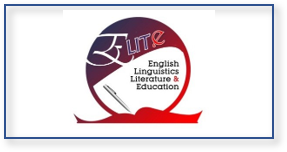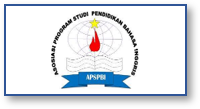Probing the Needs of Injecting Technical Communication in English Module in Indonesia Railways Polytechnic
A Students’ Perspectives
Keywords:
Technical Communication, Need Analysis, ESP, English for EngineeringAbstract
For employment, industries want recent graduates to have strong technical communication abilities. Therefore, it is important for engineering organizations to have competent technical communicators. As a result, this study looks at how Indonesian polytechnic engineering students assess their own technical communication competency needs in terms of knowledge, abilities, and attitudes toward technical communication in English. A survey on students' perceived needs for technical communication skills received responses from 85 diploma students in various engineering courses at a polytechnic. The study's findings showed that the students' knowledge and abilities about technical communication in English were low intermediate (mean > 3,5 score). In comparison to knowledge and attitudes about technical communication in English, skills in technical communication in English had the lowest mean score. This suggested that the pupils lacked technical English communication abilities. Despite this, the study's findings indicate that students understood the importance of technical communication skills for their future careers. Because need analysis is a continuous process for identifying learning needs, this study has shown that it is worthwhile to review the current needs of the polytechnic engineering students since students' responses could serve as a basis for the improvement of the classroom materials. Finally, this study has recommended that technical communication courses be included to the polytechnic education system since they are crucial for employment in a variety of fields, including engineering.
Downloads
References
CBI. (2013). Changing the pace: CBI/Pearson education and skills survey 2013. London: CBI.
Chua YP. (2010). Mastering research methods. McGraw-Hill Education, Kuala Lumpur.
Ding, H. (2018). Development of Technical Communication in China: Program Building and Field Convergence. Technical Communication Quarterly, 1-15.
Ellis, T. J., & Levy, Y. (2010). A Guide for Novice Researchers: Design and Development Research Methods. Proceedings of Informing Science & IT Education Conference (InSITE) (pp.107-118). Cassino: Italy.
Feng, X.-F. (2015). Reform and practice of oral English teaching for Non-English majors in higher vocational colleges -- taking electronic manufacturing industry as an example. Contemporary education research and teaching practice (10), 202+201.
Friess, E., & Boettger, R. K. (2021). Identifying Commonalities and Divergences Between Technical Communication Scholarly and Trade Publications (1996–2017). Journal of Business and Technical Communication, 35(4), 407-432. doi: 10.1177/1050651921102146
Holmes, A., & Miller, S. (2000). A case for advanced skills and employability in higher education. Journal of Vocational Education & Training, 52(4), 653-664.
Jamaludin, K. A., Alias, N., DeWitt, D., & Ibrahim, M. M. (2020). Technical communication pedagogical model (TCPM) for Indonesiann vocational colleges. Humanities and Social Sciences Communications, 7(1). https://doi.org/10.1057/s41599-020-00597-6
Keller, S., Parker, C., & Chan, C. (2011). Employability Skills: Student Perceptions of an IS Final Year Capstone Subject. Innovation in Teaching and Learning in Information and Computer Sciences, 10(2), 4-15.
Lappalainen P (2010) Integrated language education—a means of enhancing engineers’ social competences. Eur J Eng Educ 35(4):393–403
Michelle A. Hill, Tina L. Overton, Christopher D. Thompson, Russell R. A. Kitson, Paolo Coppo. (2019) Undergraduate recognition of curriculum-related skill development and the skills employers are seeking. Chemistry Education Research and Practice 20:1, pages 68-84.
Nauta, A., Van Vianen, A., Van der Heijden, B., Van Dam, K., & Willemsen, M. (2009). Understanding the factors that promote employability orientation: The impact of employability culture, career satisfaction, and role breadth self‐efficacy. Journal of Occupational and Organizational Psychology, 82(2), 233-251.
Politeknik Perkeretaapian Indonesia Madiun. (2021). LAPORAN SURVEY KEPUASAN PENGGUNA LULUSAN. Madiun. https://alumni.ppi.ac.id/index.php/hasil-tracer-pengguna-lulusan/
Rakesh, B, Pushpendra, P, & Mariam, H.A. (2017) Graduate attributes and employability skills. International Journal of Educational Management 31:6, pages 814-827.
Ramayah T, Cheah J, Chuah F, Ting H, Memon MA (2018) Partial least squares structural equation modeling (PLS-SEM) using SmartPLS 3.0: an updated and practical guide to statistical analysis, 2nd edn. Pearson Malaysia Sdn. Bhd., Kuala Lumpur
Rus, D. (2015). Developing technical communication skills to engineering students. Procedia Technology, 19, 1109-1114.
Saputra, W. S. (2015). Employers’ Needs for Employability Skills of Engineering Graduates in Indonesia. Proceedings of the 3rd UPI International Conference on Technical and Vocational Education and Training, 14. https://doi.org/10.2991/ictvet-14.2015.49
Shekhawat, S. (2020). Enhancing employability skills of engineering graduates. In Sustainable Production, Life Cycle Engineering and Management. https://doi.org/10.1007/978-3-030-44248-4_26
Shivoro, R. S., Shalyefu, R. K., & Kadhila, N. (2018). Perspectives on Graduate Employability Attributes for Management Sciences Graduates. South African Journal of Higher Education, 32(1), 216–232. https://doi-org.proxy.library.adelaide.edu.au/10.20853/32-1-1578
Siraj, S., Alias, N. A., DeWitt, D., & Hussin, Z. (2013). Design and Developmental Research: Emergent Trends in Educational Research. Kuala Lumpur, Malaysia: Pearson Malaysia Sdn. Bhd.
Štemberger, T., Cencič M. (2016). Design Based Research: The Way of Developing and Implementing Educational Innovation. World Journal on Educational Technology Current Issues 8(3). DOI:10.18844/wjet.v8i3.621
Tymon, A. (2013). The student perspective on employability. Studies in Higher Education, 38(6), 841. Retrieved from http://proxy.library.adelaide.edu.au/login?url=https://search-proquest com.proxy.library.adelaide.edu.au/docview/1411810117?accountid=8203
Yang, S., Duan, Q., Ji, T., Li, X., Hu, P., & Yang, Y. (2018). Research on the teaching mode of English majors for manufacturing enterprises. Guangxi journal of light industry, 34(01), 149+151.










